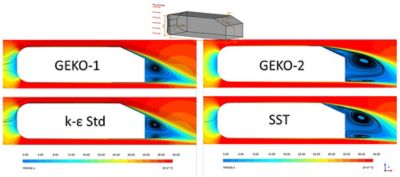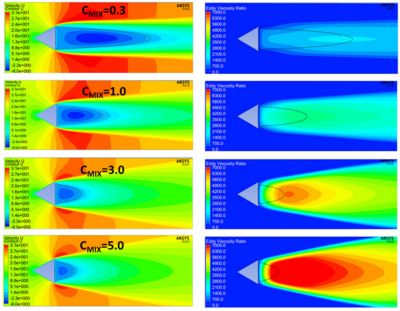-
-
Kostenlose Software für Studierende
Ansys unterstützt die nächste Generation von Ingenieur*innen
Studenten erhalten kostenlosen Zugang zu erstklassiger Simulationssoftware.
-
Verbinden Sie sich jetzt mit Ansys!
Gestalten Sie Ihre Zukunft
Stellen Sie eine Verbindung mit Ansys her, um zu erfahren, wie Simulation Ihren nächsten Durchbruch vorantreiben kann.
Länder und Regionen
Kostenlose Demoversionen
Produkte & Dienstleistungen
Lernportal
Über das Unternehmen
Back
Produkte & Dienstleistungen
Back
Lernportal
Ansys unterstützt die nächste Generation von Ingenieur*innen
Studenten erhalten kostenlosen Zugang zu erstklassiger Simulationssoftware.
Back
Über das Unternehmen
Gestalten Sie Ihre Zukunft
Stellen Sie eine Verbindung mit Ansys her, um zu erfahren, wie Simulation Ihren nächsten Durchbruch vorantreiben kann.
Kostenlose Demoversionen
ANSYS BLOG
March 13, 2019
How to Define Your Own Turbulent Flow Equation for CFD Modeling
Engineers have used computational fluid dynamics (CFD) to model turbulent flows since the early days of the computer. Though performance, speed and accuracy has improved since then, one of the greatest challenges from that past still remains: How do you find the right turbulent flow equations to model your system?
Comparison between turbulence models: two iterations of GEKO
(top, left and right), the standard k-ε (bottom, left) and sheer
stress transport (SST) (bottom, right).
Traditionally, engineers would run experiments to see which turbulence model offered results that were closest to the real-world physics being simulated.
However, this isn’t always the most accurate procedure to follow. First, the experimental data would often be based on simplifications of the system being simulated. Second, there is no way to guarantee that the turbulence model will be accurate once the simulation becomes more complex and the flow regime is extended.
Furthermore, comparing the turbulence models can be complex as each one needs to be set up differently.
Enter Ansys Fluents’ generalized k-omega (GEKO). Instead of hoping GEKO fits the test data of your simulation, Ansys users modify it until it does. This way, engineers are not picking the best one-size-fits-all model. They are tailoring the turbulence model to fit their needs.
How Engineers Customize GEKO so the CFD Model Matches the Turbulent Flows
Engineers can use six free coefficients to tweak GEKO to match their experimental flows. They are:
- CSEP — customizes the flow separation from smooth walls.
- CNW — customizes the heat transfer for near wall flows.
- CMIX — customizes free shear flow mixing.
- CJET — customizes free jet spreading rates.
- CCORNER — customizes corner flow separation.
- CCURV — customizes vortex flows.
GEKO simulation of the flow around a triangular cylinder
using various CMIX values.
The idea is to see how GEKO performs, compare it to the test data, and tune these six coefficients until your version of GEKO matches your data.
To see how GEKO’s parameters effect Fluent results, read the white paper: GEKO — A New Paradigm in Turbulence Modeling, or watch the webinar GEKO Puts You in Control of CFD Turbulence Modeling.

